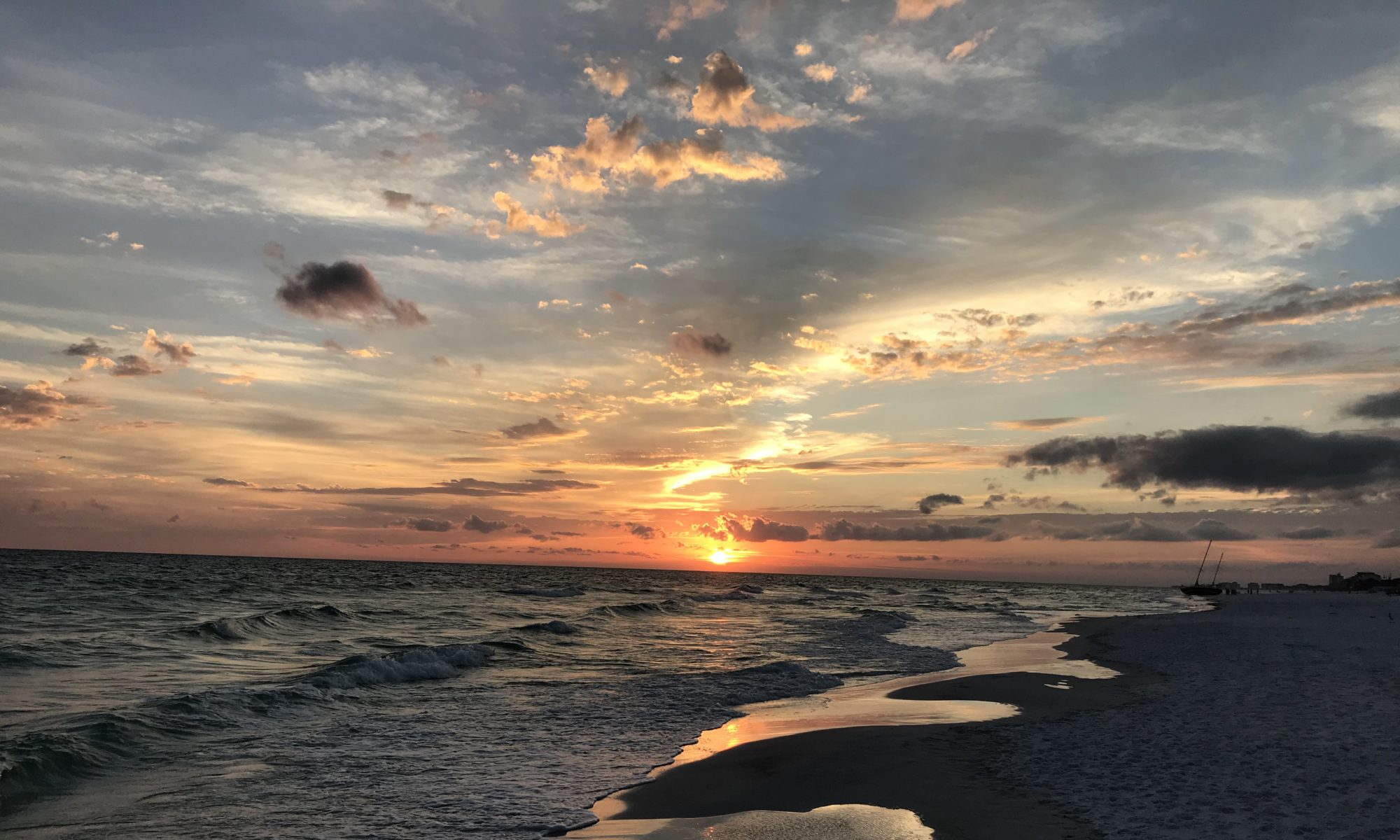While we are waiting a few more days to begin our northbound ascent, we are well into the Florida hurricane season. It officially began on June 1st, so I was curious about the timing of most of these powerful storms and whatever other facts I could find about hurricanes and Florida’s history with them.
Florida has taken more direct hits from hurricanes than any other state. About 500 recorded over the years. And yet people are still relocating to the sunshine state. It seems the great winter weather combined with the fact that Florida has no state income or personal property tax is enough to ignore the big storms. That is, until the National Hurricane Center begins tracking one.
The state has perfected the drill to stock up on necessary supplies and even offers a sales tax free week for these items. I assume that if you are the path of a category 1 or 2 it means to stock up on the essentials (water, flashlights, bread, milk, and beer). A category 5 has folks fleeing and heading north to Georgia or the other southern states. I’m not sure how Covid will affect this process this year.
Hurricane Strength
Hurricanes are categorized by using the Saffir-Simpsom scale. It was developed in the 1960’s and into the 1970’s and measures four storm attributes:
Below is a guide to hurricane categories and the damage they can cause.

Category 5s
Florida has seen three of the cat 5 hurricanes since they began tracking them. The first and most powerful was the 1935 Labor Day hurricane. It was the most powerful to hit the United States in recorded history and made landfall in the middle Florida keys. It claimed almost 500 lives including 260 World War I veterans who were building a section of the Overseas Highway. More info in this LINK.
We saw a very thorough exhibit about the Labor Day Cat 5 in the Key West Customs House Museum. Powerful enough to destroy an entire train including the steam engine and several train cars. The train track was also gone. Hard to imagine the force of wind.
The next most powerful was Andrew in 1992 with wind speeds of 165 mph. It hit the Homestead Florida area and stripped many homes of all but their concrete foundations. In total, Andrew destroyed more than 63,500 houses, damaged more than 124,000 others, caused $27.3 billion in damage, and left 65 people dead.
The third on this list was the more recent Michael that clocked wind speeds of 160 mph. Making landfall on Mexico Beach Florida, it destroyed all the homes and condos in its path. At least 74 deaths were attributed to the storm, including 59 in the United States and 15 in Central America. Michael caused an estimated $25.1 billion in damages.
Hurricane Timing
The Florida hurricane season officially begins on June 1st and ends on November 30th. With the peak season around September as the Gulf waters have warmed enough. See NOAA chart below.

So from the chart above, September is the month to avoid. I remember back before retirement that we would usually take a Caribbean cruise in September after the young folks have gone back to school. And before the spring break craziness has begun. It seemed like a good idea at the time. We must have been lucky to avoid one of these storms although the modern cruise ships can usually take a detour and avoid the weather.
It has been a long time since my last post. We were delayed leaving Florida due to completing some medical tests. More on that in another post, although nothing too major.
But now we are on the road again and just in time it seems. The Corona-virus cases are surging again here in the Sunshine State along with the heat. And now we have some strange Sahara sand storm in progress too bringing more heat and harmful dust to breathe.
I have always enjoyed the warm and humid weather, but at a ferocious 96 humid degrees with well over 107 heat index, even I am raising the white flag. (If one is still allowed to say that). Doing some outside RV chores required me to change out of my shirt leaving it crumpled in a ball of sweat.
Looking forward to the cool mountain breezes of southwest Virginia in a few more days. Take care and God Bless.

I hope your travels north are safe and that you do not have to many bugs to work out. Never know what might pop up as the result of your rig sitting still for a prolonged period.
Travel Safe,
Robert
Safe travels … will be good to have you back in the area for a bit … hopefully before Wreck-It Ralph shuts us down again … scheduled to enter Phase III on July 1st …
Hope you are traveling well and enjoying back on the road again. Would love to see you guys if possible. We’re always up for a day trip!